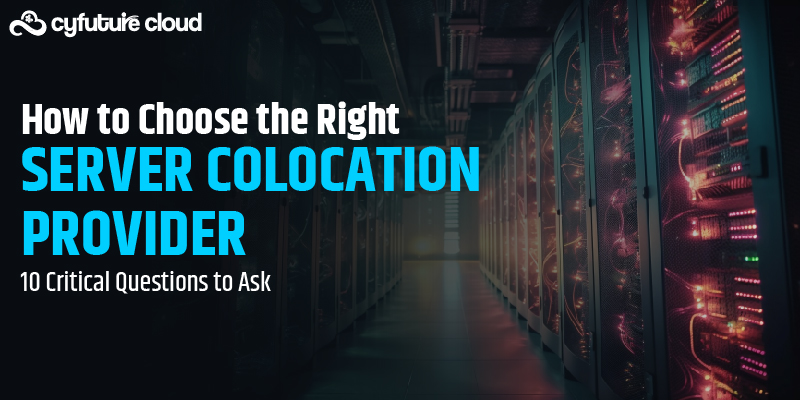Table of Contents
Hybrid Cloud Hosting
Hybrid cloud hosting refers to a computing environment that combines the use of both private and public cloud services, allowing data and applications to be shared between them. This hybrid model provides businesses with greater flexibility, allowing them to leverage the benefits of both private and public clouds based on their specific needs.
Key aspects of hybrid cloud hosting include:
-
Integration: It involves the integration of on-premises infrastructure, private cloud resources, and public cloud services. This integration allows seamless data and application sharing between different environments.
-
Flexibility: Businesses can utilize the private cloud for sensitive or critical workloads that require higher security, compliance, or customization, while using the public cloud for scalability, cost-efficiency, and resource-heavy tasks.
-
Scalability: Hybrid cloud setups enable scalability by allowing organizations to scale their resources dynamically. They can utilize public cloud resources during peak demand while retaining control over certain workloads in the private cloud.
-
Cost Optimization: Organizations can optimize costs by strategically allocating workloads to different cloud environments. Less sensitive or fluctuating workloads can be placed on the public cloud to benefit from its pay-as-you-go pricing model.
-
Security and Compliance: Companies can maintain sensitive data and applications within the more controlled environment of the private cloud while adhering to specific security and compliance requirements. Meanwhile, they can still take advantage of the public cloud’s resources for less critical operations.
-
Disaster Recovery and Redundancy: Hybrid cloud setups can facilitate robust disaster recovery plans by replicating data between private and public clouds, ensuring data redundancy and availability in case of system failures or disasters.
Implementing and managing a hybrid cloud environment requires careful planning, appropriate networking, security measures, and integration strategies. It’s essential to choose compatible cloud platforms and ensure that data transfer and synchronization between the private and public clouds occur efficiently and securely. Organizations must also consider factors such as governance, data governance, compliance, and application architecture when adopting a hybrid cloud model.
A hybrid cloud is a cloud computing environment that combines private cloud services hosted on-premises with public cloud services provided by third parties, orchestrating various platforms. Typically, this entails connecting a public cloud to an on-premises data center. Other private assets, such as edge devices or other clouds, may also be connected.
While you get an idea of what Hybrid Cloud is, catch on to the Companies with the best cloud hosting in India.
Some Aspects of Hybrid Cloud Services:
| Hybrid Cloud Service Aspects | Description |
|---|---|
| Flexibility | Combines the advantages of both private and public clouds, allowing businesses to use each environment for specific workloads based on requirements. |
| Scalability | Offers scalability by leveraging the elasticity of public clouds for fluctuating workloads while maintaining control over critical applications in the private cloud. |
| Security | Provides enhanced security by allowing sensitive data and critical applications to be kept within the private cloud, while still utilizing public cloud resources for less critical tasks. |
| Cost Efficiency | Offers cost optimization by enabling organizations to manage expenses through strategic allocation of workloads to different cloud environments, optimizing spending based on needs. |
| Integration | Involves seamless integration between on-premises infrastructure, private cloud, and public cloud services, facilitating smooth data and application sharing across diverse environments. |
| Redundancy and Disaster Recovery | Ensures data redundancy and robust disaster recovery plans by replicating and synchronizing data between private and public clouds, enhancing resilience in case of system failures. |
| Compliance and Governance | Addresses compliance needs and governance requirements by allowing organizations to control where data resides and how it is managed across different cloud environments, ensuring regulatory adherence. |
| Resource Optimization | Enables the efficient use of resources by dynamically utilizing the scalability and cost-effective nature of public clouds while retaining control over specific workloads in the private cloud. |
How are hybrid clouds operated?
A hybrid cloud approach allows businesses to deploy workloads in both private and public clouds, switching between them as computing requirements and costs vary. As a result, a corporation has more alternatives for deploying data and more flexibility. An application’s network, hosting, and web service components are all included in a hybrid cloud workload.
Although the terms are occasionally used synonymously, there are significant distinctions between hybrid and multi-cloud setups. A hybrid cloud, such as those provided by AWS, Microsoft, and Google, establishes a single environment in which to operate both on-premises, private, and public cloud resources. A multi-cloud environment lacks a private or on-premises component and consists of two or more public cloud service providers.
Cloud hybrid advantages
With hybrid cloud computing, a business can host less-critical resources on a third-party public cloud provider while deploying its most sensitive workloads in an on-premises cloud. Using this strategy, businesses can benefit from both private and public cloud models.
The following are some of the main advantages of hybrid cloud:
Flexibility
Companies adapt their infrastructure as they work with different sorts of data in different settings. A hybrid cloud arrangement uses both conventional systems and the most recent cloud technology without making a full vendor commitment. When necessary, businesses can move workloads between their on-premises infrastructure and a vendor’s public cloud.
Controlling costs
Organizations that use private clouds are the ones who own and manage the data center infrastructure, which comes at a hefty capital expense and fixed cost. Public cloud resources and services, on the other hand, are treated as varying and ongoing costs. Users of hybrid clouds have the option to run workloads in whichever environment is more economical.
Scalability and flexibility
In comparison to a company’s physical data center, a hybrid cloud gives greater resource possibilities via a public cloud provider. This makes it simpler to deploy, provide, and scale resources to handle sudden increases in demand. A company can burst an application to the public cloud to acquire additional scale and capacity when demand surpasses the local data center’s capacity.
Reliability and compatibility
Workloads can be duplicated by an organization in both public and private settings. Additionally, parts of one task can run and interact in both environments.
Compliance
Businesses operating in highly regulated sectors are required to abide by limits on the location of data, which frequently prevents them from moving specific workloads to public clouds. With a hybrid cloud, businesses can run workloads in the cloud while keeping data in a private environment, or they can run workloads in a private data center and transfer data to and from the public cloud as necessary. This enables businesses to adhere to regulations while still enjoying the elasticity of the cloud.
Architecture for hybrid clouds
The following three elements are necessary for hybrid cloud setup:
- An appropriate network connection to the hybrid cloud’s private and public cloud environments;
- Public infrastructure as a service platform like Amazon Web Services, Microsoft Azure, or Google Cloud Platform;
- Private computing resources like an on-premises data center.
Cloud hybrid networking
In order for a hybrid cloud approach to be effective, a solid network connection is essential. For added security, this typically comprises a wide area network or a specialized networking service. A business should regularly assess its connection to make sure it satisfies the uptime specifications stated in the service-level agreement with a cloud provider.
Cloud hybrid integration
A public cloud architecture is not directly under the authority of an organization. Therefore, a firm must modify its environments and resources to be compatible with the resources, services, and APIs of the public cloud platform it has chosen (APIs). For this, the data center must incorporate the necessary hardware, such as servers, storage, a local area network, and load balancers. These on-premises resources and environments must be able to interface and work with public cloud services and APIs for a hybrid arrangement to be successful.
Platforms for hybrid clouds
In order to construct and support virtual machines and, increasingly, workloads based on containers, hybrid cloud architecture typically layers a virtualization layer or hypervisor on top of on-premises resources. A private cloud software layer, such as VMware or OpenStack, is then installed on top of this to provide a variety of cloud capabilities, including self-service access to services like compute or database instances, automation and orchestration, resilience, and pricing. The services and APIs from public cloud providers incorporate this layer
Offering hybrid cloud platforms that extend public cloud services into private data centers is a more recent hybrid cloud architectural strategy. This indicates that the same software stack is used throughout. These hybrid cloud solutions utilize various methods to link public and private resources together, but they frequently include standard business tools like Kubernetes to manage container-based services.
Comparing public and private clouds
Public cloud and private cloud components make up a hybrid cloud model.
In order to access on-demand IT resources like virtual machines, apps, and storage, as well as services like data analytics, over the internet or a dedicated network, the public cloud model depends on a third-party provider. Multiple companies can access cloud services through public cloud providers, which host workloads.
The private cloud model often makes use of on-premises architecture, either in the local data centre of the business or a different physical infrastructure offered by a third party. Virtualization software can also be the foundation of a private cloud. Regardless of the particular private cloud strategy, businesses do not share resources with other users.
Hybrid cloud administration
It is a difficult process since hybrid cloud architecture consists of several environments and components kinds. Fortunately, there are methods and technologies that may be used to simplify hybrid management issues and apply a consistent methodology across different contexts.
To have the most control over your environments, use hybrid cloud management techniques. Create a cloud governance policy, for instance, that outlines typical procedures for resource setups, access control, and other crucial actions. This will establish a uniform, consistent strategy for all of the parts of your hybrid architecture.
Recent Post
Send this to a friend

 Server
Colocation
Server
Colocation CDN
Network
CDN
Network Linux
Cloud Hosting
Linux
Cloud Hosting Kubernetes
Kubernetes Pricing
Calculator
Pricing
Calculator
 Power
Power
 Utilities
Utilities VMware
Private Cloud
VMware
Private Cloud VMware
on AWS
VMware
on AWS VMware
on Azure
VMware
on Azure Service
Level Agreement
Service
Level Agreement 



















